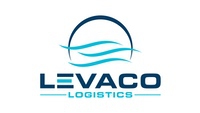Drewry, the maritime specialized have analyzed that the three major global container carriers, Maersk Line, Mediterranean Shipping Co. and CMA CGM, have increased their market share of the worldwide container capacity from 26% to 38% over the past decade and continue to pull ahead of the competition.
This increase is a result of the organic growth from new ship deliveries coupled with mergers and acquisition activity including Maersk’s takeover of P&O Nedlloyd in late 2005 and the recent merger of German Hapag Lloyd with South American CSAV.
The top three carriers have posted an average compound annual growth rate of 12.5% since 2005, compared with 9.6% for the top 20 lines and 8.7% for the total world fleet.
The concentration of power of these three leading carriers has been an unstoppable trend over the last decade apart from 2009 when the global financial crisis forced major lines to off-hire and lay-up container vessels.
The top three plus fourth ranked Hapag-Lloyd and fifth ranked Evergreen have seen their market share grow up to 48% from 37% back in 2005.
The London analyst stated in their last issue of Container Insight Weekly that the concentration of power at the top isn’t at a critical point just yet, but shippers would have some justification for describing the market as an oligopoly if the top five carriers reached the point where they controlled say 90 percent of the global capacity.
With an aggregate fleet of just under 17 million teu, the top 20 carriers now control 87% of the world’s total container capacity, up from 79% in 2005. The top 20 lines have added a “staggering” 10.2 million teu’s over the past 10 years.
In the past, the medium-sized carriers have grown their fleets sufficiently to prevent being taken over by the larger operators. But now the gap is getting much more important thanks to the top three carriers having huge order books for new built vessels in near future.
Medium sized lines are following the lead of the top players by ordering mega-ships in an attempt to survice. “In doing so they make themselves a tougher catch for the big lines as the new assets will inflate their purchase prices and at the same time make it harder to keep any merged entity beneath acceptable competition thresholds,” Drewry continued.
The purchase of mega-ships by mid-sized carriers is a defensive move to fight off any attack by the big players “but the sting in the tail is that it guarantees years of overcapacity that will depress freight rates and profitability for all.”
With rates at historical lows and bunker costs steadily creeping up even a company of Maersk’s size will feel the pinch, according to Drewry.
Recent comments by Maersk Group CEO Nils Andersen questioning the logic of continued investments by small and medium-sized carriers with 3-5 percent market shares that have been unprofitable for the past seven years “perhaps betrays a company that knows it is in for a bumpy ride in the short-term at least.”
“The removal of a few pesky competitors would certainly help to lift freight rates off the floor.”
But a carrier with 3 to 5%capacity applies more or less to any top 20 line other than Maersk, MSC and CMA CGM, Drewry notes.


